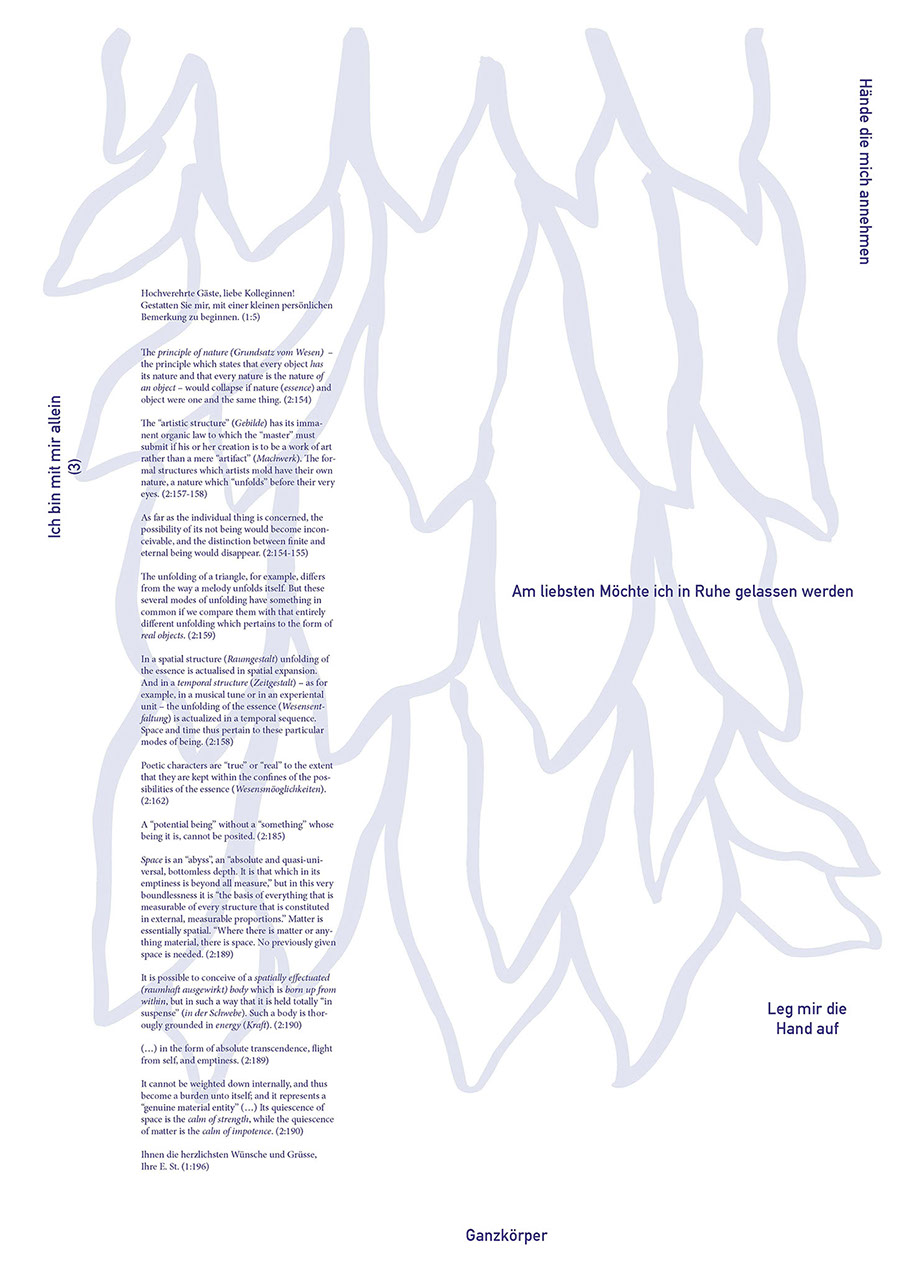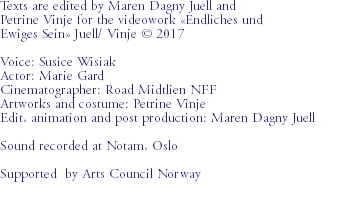

Hochverehrte Gäste, liebe Kolleginnen!
Gestatten Sie mir, mit einer kleinen persönlichen
Bemerkung zu beginnen. (1:5)
The principle of nature (Grundsatz vom Wesen) –
the principle which states that every object has
its nature and that every nature is the nature of
an object – would collapse if nature (essence) and
object were one and the same thing. (2:154)
The “artistic structure” (Gebilde) has its immanent
organic law to which the “master” must
submit if his or her creation is to be a work of art
rather than a mere “artifact” (Machwerk). The formal
structures which artists mold have their own
nature, a nature which “unfolds” before their very
eyes. (2:157-158)
As far as the individual thing is concerned, the
possibility of its not being would become inconceivable,
and the distinction between finite and
eternal being would disappear. (2:154-155)
The unfolding of a triangle, for example, differs
from the way a melody unfolds itself. But these
several modes of unfolding have something in
common if we compare them with that entirely
different unfolding which pertains to the form of
real objects. (2:159)
In a spatial structure (Raumgestalt) unfolding of
the essence is actualised in spatial expansion.
And in a temporal structure (Zeitgestalt) – as for
example, in a musical tune or in an experiental
unit – the unfolding of the essence (Wesensentfaltung)
is actualized in a temporal sequence.
Space and time thus pertain to these particular
modes of being. (2:158)
Poetic characters are “true” or “real” to the extent
that they are kept within the confines of the possibilities
of the essence (Wesensmöoglichkeiten).
(2:162)
A “potential being” without a “something” whose
being it is, cannot be posited. (2:185)
Space is an “abyss”, an “absolute and quasi-universal,
bottomless depth. It is that which in its
emptiness is beyond all measure,” but in this very
boundlessness it is “the basis of everything that is
measurable of every structure that is constituted
in external, measurable proportions.” Matter is
essentially spatial. “Where there is matter or anything
material, there is space. No previously given
space is needed. (2:189)
It is possible to conceive of a spatially effectuated
(raumhaft ausgewirkt) body which is born up from
within, but in such a way that it is held totally “in
suspense” (in der Schwebe). Such a body is thorougly
grounded in energy (Kraft). (2:190)
(…) in the form of absolute transcendence, flight
from self, and emptiness. (2:189)
It cannot be weighted down internally, and thus
become a burden unto itself; and it represents a
“genuine material entity” (…) Its quiescence of
space is the calm of strength, while the quiescence
of matter is the calm of impotence. (2:190)
Ihnen die herzlichsten Wünsche und Grüsse,
Ihre E. St. (1:196)

A collaborative work between Petrine Vinje and Maren Dagny Juell. Based on the writings of Edith Stein in her book "Finite and Eternal Being: An Attempt at an Ascent to the Meaning of Being". Other text by Petrine Vinje.
First exhibited in Petrine Vinjes exhibition SCIVIAS at Tegneforbundet, Oslo, Norway.




